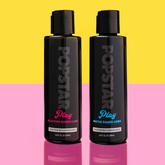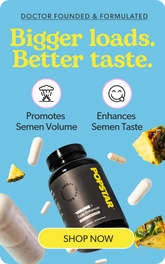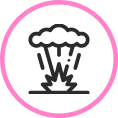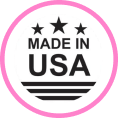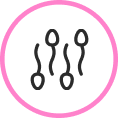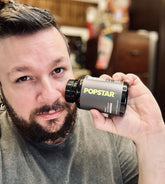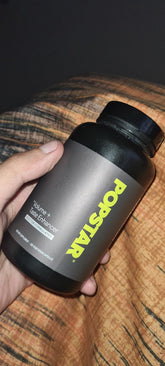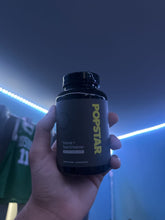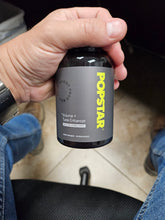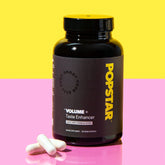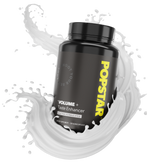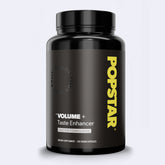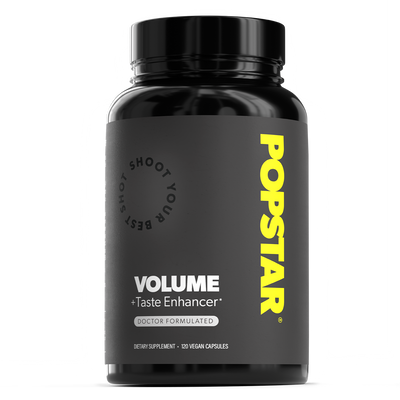The term “female taint,” often used colloquially to describe the perineal region in females, refers to the area of skin and underlying tissues located between the vulva and the anus. Although this slang term can sometimes spark curiosity or confusion, understanding the functional and anatomical aspects of this region can be beneficial for anyone interested in female sexual and reproductive health. In this comprehensive guide, we explore the definition, significance, common conditions, and care practices related to the female taint. We also address frequently asked questions, helping you better understand how this region impacts overall wellbeing.
Table of Contents
- Definition of Female Taint
- Quick Anatomy Overview
- Why Is the Female Taint Important?
- Common Conditions
- Care and Hygiene
- FAQs
- Conclusion
- References
Definition of Female Taint
The phrase “female taint” is not a formal medical term. Instead, it is a slang descriptor for what medical professionals typically call the female perineum. This region is a bridge of skin, fascia, and muscle that sits below the vulva and above the anus. The term “taint” derives from vernacular usage in different cultures, but the formal word is “perineum.” In women, the perineum may range in length, typically measuring anywhere from about one to two inches, although individual variations can occur.
Despite the informal name, the female taint plays important roles in sexual function, reproductive health, and structural support for the pelvic organs. Because of its close proximity to the vulva, vagina, and anus, proper hygiene and care of this area is crucial. Understanding the female taint is not just relevant to women; male partners who wish to understand female anatomy more thoroughly can find this knowledge useful for supporting their partner’s wellbeing.
This region also forms part of the pelvic floor. The muscles, tissues, and nerves in this area can affect urinary and fecal continence, sexual pleasure, and overall pelvic health. Damage to or infection of the female taint can impact a woman’s quality of life, indicating the importance of knowledge and preventive care.
Quick Anatomy Overview
The anatomy of the female perineum includes several key structures that sit in close proximity. Although the slang “female taint” can minimize the complexity, this area involves the following:
- Vulva: The external portion of the female genital tract, which includes the clitoris, labia minora, labia majora, and the urethral opening.
- Vaginal Opening: Located just above the perineum, the vaginal opening is where menstrual fluid exits and through which intercourse or childbirth can occur.
- Perineal Body: A fibromuscular mass of tissue that serves as an anchor for many pelvic floor muscles. This structure plays a critical role in supporting pelvic organs.
- Anus and Anal Canal: Located just below the perineum, responsible for controlling the passage of stool from the lower gastrointestinal tract.
Additional muscles, connective tissues, and nerve pathways weave together to support essential bodily functions. The blood supply to this region is rich, and complex nerve endings can influence sexual sensation. Understanding these anatomical specifics can highlight why injuries to this region—from childbirth tears to perineal trauma—demand careful attention and proper care for optimal healing and comfort.
Because numerous vital structures converge within this small space, maintaining good hygiene, watching for signs of infection, and consulting a healthcare professional for any persistent discomfort are crucial steps toward preserving one’s overall pelvic health.
Why Is the Female Taint Important?
The female taint (perineum) provides central structural stability and contributes substantially to various functions, including the following:
- Pelvic Floor Support: The perineum helps keep pelvic organs, such as the uterus, bladder, and rectum, aligned and supported.
- Facilitation of Childbirth: During vaginal delivery, the perineum stretches significantly to allow the passage of the baby. Proper perineal care can be key to postpartum recovery.
- Sexual Function: The female taint contains nerve endings that can enhance sexual sensation. Strengthening the muscles of the pelvic floor, including the perineum, can improve intimacy and orgasmic potential.
- Urinary and Fecal Continence: The pelvic floor muscles and supportive structures around the perineum help regulate the opening and closing of the urethra and anus.
In addition, robust perineal health can boost overall confidence and comfort. Maintaining awareness of changes in this region (such as pain, itching, or swelling) facilitates prompt medical evaluation and treatment. Because so many vital functions converge here, issues in the perineal region can be disruptive, highlighting the importance of awareness and routine health checks.
Common Conditions
While the female taint is often overlooked, it can be prone to several conditions. Some are mild and easily managed, while others require professional treatment.
1. Irritation and Rashes
Skin irritation is common in the perineal area, resulting from friction, tight clothing, or improper hygiene. Sweating and moisture buildup also increase susceptibility to rashes, fungal infections, and bacterial overgrowth. If left untreated, a mild rash can evolve into a more severe condition.
2. Perineal Tears (During Childbirth)
Childbirth can cause tears in the perineum as the baby’s head passes through the vaginal opening. These tears are categorized by degrees of severity—first-degree tears affect only the skin, while fourth-degree tears can extend through muscle tissue and involve the anal sphincter. Proper postpartum wound care is essential to prevent infection and aid healing.
3. Abscesses or Cysts
Occasionally, glands in the genital region can become blocked, leading to cysts or abscesses near the perineum. These present as painful lumps and can be accompanied by fever or redness. A healthcare provider should evaluate any persistent lump or lesion for appropriate treatment, which may include drainage or antibiotics.
4. Infections
Bacterial or fungal infections are possible in this warm, moist region. Symptoms may include itching, redness, swelling, or discharge. Timely diagnosis and treatment can relieve discomfort and prevent more serious complications.
5. Hemorrhoids
Although typically discussed in relation to the anal region, hemorrhoids can sometimes affect the general perineal area, causing discomfort, pain, or bleeding. They result from the swelling of veins around the anus. Preventive measures include ensuring adequate fiber intake, staying hydrated, and avoiding excessive straining.
To address any of these conditions, it is advisable to consult a healthcare provider, especially if symptoms persist. Early intervention often leads to better outcomes, reducing the likelihood of complications that can hamper day-to-day activities and comfort.
Care and Hygiene
Caring for the female taint is crucial for maintaining overall pelvic health. By incorporating conscious hygiene practices and supportive lifestyle habits, it’s possible to reduce irritation and decrease the likelihood of infections. Below are some recommendations:
- Gentle Cleansing: Use mild, unscented soaps or pH-balanced cleansers to wash the area daily. Aggressive scrubbing or overuse of perfumed products can lead to dryness and irritation.
- Proper Drying: After bathing or using the toilet, ensure the area is thoroughly dried. Excess moisture can create an environment for bacteria and fungi to thrive, increasing the risk of infection.
- Loose, Breathable Clothing: Opt for cotton underwear and avoid tight-fitting pants. Breathable fabrics allow better air circulation, minimizing skin irritation.
- Pelvic Floor Exercises: Regularly practicing Kegel exercises can strengthen the muscles around the perineum, supporting continence and potentially enhancing pleasure during intercourse.
- Avoid Irritants: Products containing strong fragrances, harsh chemicals, or dyes can cause allergic reactions or rashes. Look for hypoallergenic or dermatologist-tested products.
- Healthy Diet and Hydration: A balanced diet, rich in fiber and sufficient water intake, supports bowel regularity. This helps reduce straining that can stress the perineum.
- Safe Sexual Practices: Use appropriate lubrication and engage in gentle intercourse to avoid tearing or friction-related issues. If pain or bleeding ensues, seek medical advice.
Attentive perineal care not only promotes personal comfort but also contributes to broader urinary, sexual, and digestive health. Awareness of how personal habits affect this region can help in preventing complications and maintaining general wellbeing.
FAQs
What exactly is the female taint for?
The female taint, or perineum, is critical for pelvic floor stability, sexual function, and childbirth. It supports structures like the bladder, uterus, and rectum while also containing nerve endings that can contribute to pleasurable sensations.
Is the female taint the same as the male taint?
While both sexes have a perineum, the term “taint” is often used to describe the space between the anus and genitals in a casual manner. In men, this region lies between the scrotum and anus, whereas in women, it lies between the anus and vulva. The anatomical details, however, differ based on male and female reproductive structures.
Can the size of the female taint vary?
Yes, the size and shape of the perineum vary from person to person. Factors such as genetics, overall body composition, and childbirth history can influence perineal length and structure.
Are perineal tears during childbirth common?
Perineal tears do occur frequently during vaginal childbirth. Many women experience mild tearing, but more serious tears are less common. Proper prenatal preparation, guided pushing, and perineal massage may help reduce the risk or severity of tearing. Medical professionals can provide postpartum care for stitches and healing if tears occur.
How can I reduce discomfort in the female perineum?
To minimize discomfort, wear loose and breathable clothing, practice good hygiene, and perform pelvic floor exercises to strengthen supporting muscles. If discomfort persists or worsens, consult your healthcare provider for a diagnosis and personalized treatment plan.
Why might the perineum hurt after sex?
Post-coital perineal pain can stem from friction, lack of lubrication, or muscle strain. It could also be related to an underlying infection or inflammation if ongoing discomfort is experienced. Monitoring symptoms and consulting a healthcare professional if pain persists can provide clarity and relief.
What should I do if I suspect an infection?
Signs of infection like redness, swelling, unusual discharge, or foul odor should be taken seriously. Consult a doctor or gynecologist for proper testing and treatment. Early intervention can prevent more serious complications.
Can I strengthen my female taint?
Yes. Strengthening the perineal area generally involves pelvic floor exercises (Kegels), targeted stretching, and maintaining a healthy lifestyle that supports muscle tone. These measures can help improve sexual function, reduce incontinence, and make childbirth recovery smoother.
What if I notice a lump or lesion?
Lumps or lesions around the perineum may indicate a cyst, abscess, or other medical issues such as hemorrhoids. If you notice persistent swelling, pain, or changes in texture, consult a healthcare provider for an evaluation. Early assessment is crucial to ensuring proper treatment and avoiding complications.
Is postpartum care of the perineum important?
Absolutely. After childbirth, perineal care is essential for healing. This may include sitz baths, gentle cleaning, and following a healthcare provider’s instructions to promote recovery. Any signs of infection—such as extreme pain, foul-smelling discharge, or swelling—should be addressed immediately.
Conclusion
The “female taint” or perineum is a small area with significant anatomical and functional importance. From supporting childbirth and promoting sexual pleasure to facilitating continence and pelvic organ support, this region deserves mindful attention. Practicing good hygiene, recognizing the signs of potential ailments, and consulting with professionals when necessary are vital steps toward ensuring perineal health.
As you explore men’s health topics, understanding the female taint can prove informative for partners looking to support and appreciate the complexities of female anatomy. Combining consistent hygiene practices, healthy lifestyle choices, and routine checks can help stabilize and protect this vital region.
References
- Hollins Martin, C. J., & Martin, C. R. (2014). Perineal trauma: A comprehensive guide to prevention, recognition and repair. Springer.
- American College of Obstetricians and Gynecologists. (ACOG). Frequently Asked Questions about Childbirth and Perineal Tears. https://www.acog.org
- National Library of Medicine. Pelvic Floor Anatomy and Conditions. https://www.nlm.nih.gov
- Mayo Clinic. (2020). Childbirth: Perineal Care. https://www.mayoclinic.org


